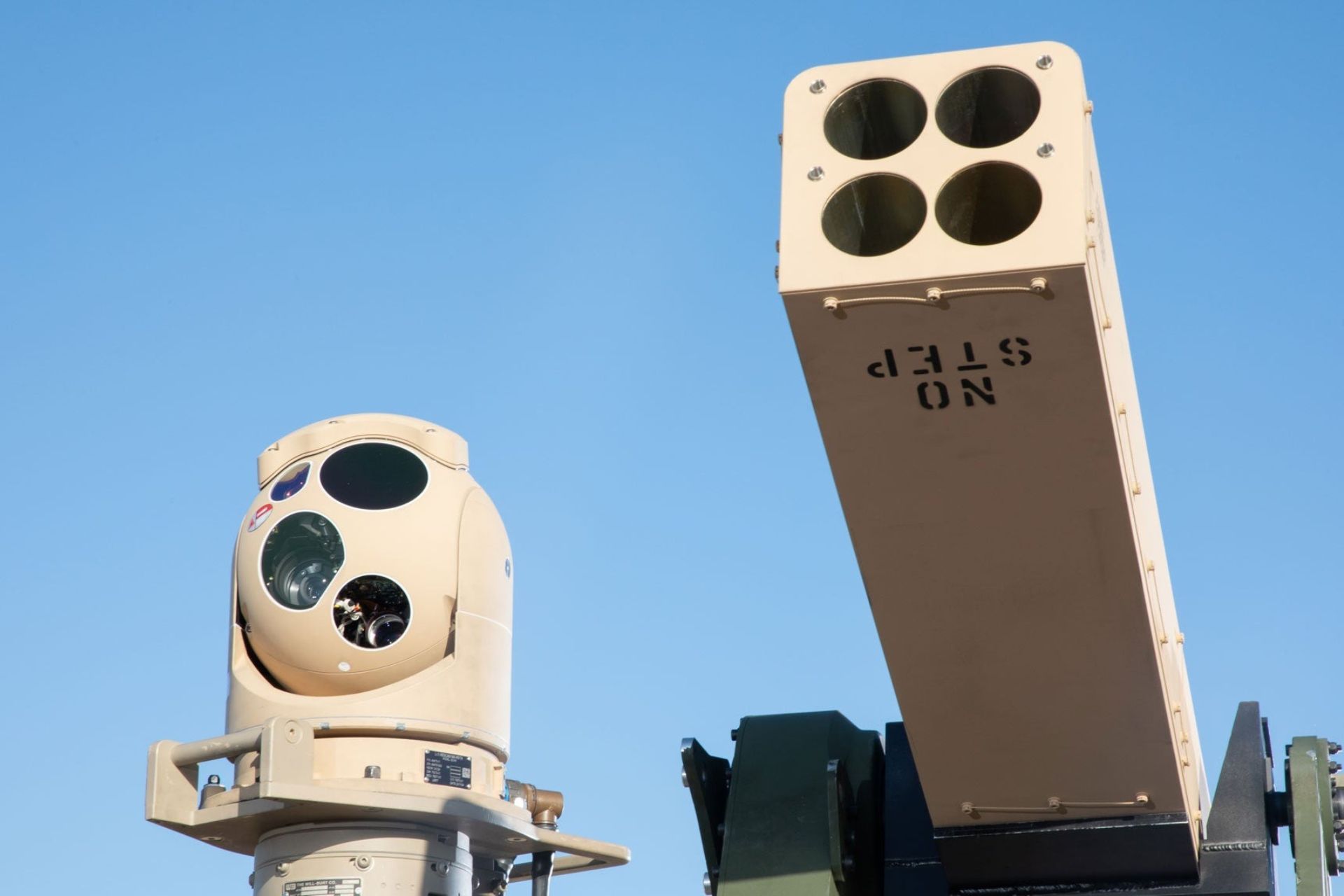Breaking News
L3Harris Explores Maritime Version of Vampire Counter-Drone Defense System.
Defense technology manufacturer L3Harris is exploring a maritime version of its Vampire counter-drone defense system to enhance naval protection against airborne threats. Initially designed as a truck-mounted platform to provide low-cost precision defense for ground forces, the Vampire gained recognition in 2022 as one of the first weapon systems supplied to Ukraine by the Pentagon. Simple and durable in design, the Vampire combines widely available 2.75mm Advanced Precision Kill Weapon Systems (APKWS) rockets from BAE Systems with an L3Harris Wescam MX-10D digital sensor equipped with a laser designator.

The Vampire system could be directly installed on warships, but L3Harris is also investigating an innovative approach: mounting Vampire units on uncrewed vessels that would create a defensive perimeter around the main vessel, establishing an anti-drone shield (Picture source: L3Harris)
L3Harris has announced the adaptation of this system into a version intended to provide an anti-drone solution for ships at sea. According to Jason Lambert, president of the Intelligence, Surveillance, and Reconnaissance division at L3Harris, demonstrations for maritime use are currently underway, with a version of the Vampire deployed on ships. These tests are taking place amid repeated drone and cruise missile attacks targeting U.S. warships in the Red Sea over the past year, described by Pentagon officials as the most intense naval combat involving the U.S. since World War II.
Although combat vessels are equipped with multi-layered air defense systems, these systems primarily rely on costly missiles, of which ships can carry only limited quantities. Each Raytheon SM-2 missile used by the U.S. Navy costs approximately $2 million, while the larger SM-6 model exceeds $4 million. In contrast, the smaller and less expensive APKWS rockets used in the Vampire system offer a cost-effective option between long-range missiles and close-range defensive guns, optimizing cost per shot.
The Vampire system could be directly installed on warships, but L3Harris is also investigating an innovative approach: mounting Vampire units on uncrewed vessels that would create a defensive perimeter around the main vessel, establishing an anti-drone shield. By deploying, for example, four such autonomous vessels equipped with numerous rockets around a single main ship, L3Harris envisions an additional layer of protection against attacks. These Vampire units would be remotely controlled from the primary vessel, with human operators managing targeting and rocket guidance. The company is also examining the possibility of incorporating autonomy into the system to facilitate target identification.

The land-based Vampire version deployed in Ukraine uses a magazine of four APKWS rockets, but the maritime concept anticipates a larger capacity to counter saturation drone attacks (Picture source: L3Harris)
The land-based Vampire version deployed in Ukraine uses a magazine of four APKWS rockets, but the maritime concept anticipates a larger capacity to counter saturation drone attacks.
Over the past year, U.S. warships have faced dozens of armed drone strikes conducted in saturation waves, which have been intercepted by naval air defenses and carrier-based fighters. Despite these efforts, civilian ships have been impacted, with some even sinking.
Since deploying the Vampire in Ukraine, L3Harris has implemented several enhancements, including the addition of proximity fuses on APKWS rockets, eliminating the need for direct hits to neutralize targets. According to Lambert, feedback from Ukraine regarding the Vampire’s performance in combat has been “extremely positive.”
The Ukraine conflict has underscored the critical role of drones in modern warfare, with both sides deploying small drones extensively for reconnaissance, artillery adjustment, and anti-personnel and anti-armor strikes. Russia has also used waves of armed drones and cruise missiles to target Ukrainian civilian areas.


























